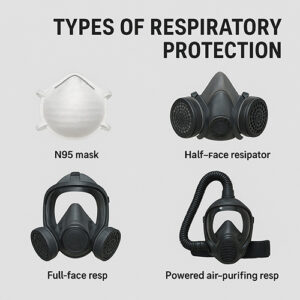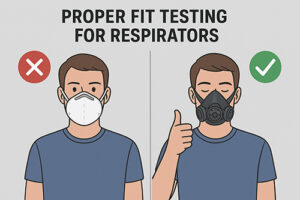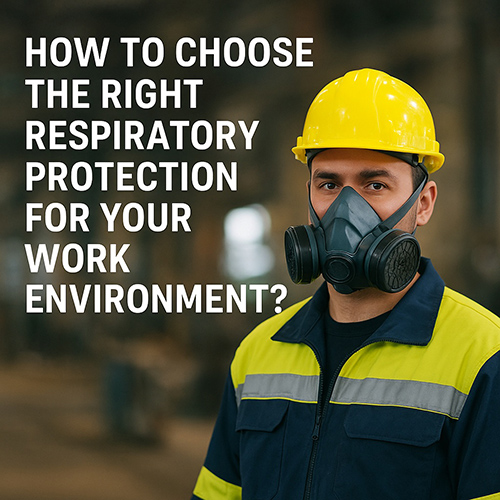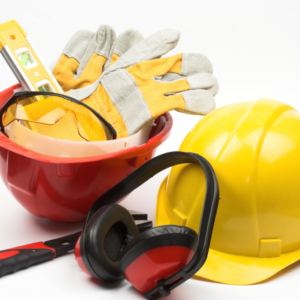When it comes to workplace safety, respiratory protection is one of the most critical yet often overlooked aspects of personal protective equipment (PPE). From construction sites to manufacturing plants, workers are exposed to various airborne hazards — such as dust, fumes, and gases — that can cause serious health problems over time.
Choosing the right respirator isn’t just about compliance; it’s about protecting your employees’ health and ensuring consistent, comfortable protection on the job.
1. Why Respiratory Protection Matters
Airborne contaminants can have both short-term and long-term effects on worker health. Dust and fumes may irritate the eyes, nose, and throat, while prolonged exposure to gases and chemicals can lead to chronic respiratory diseases or even organ damage.
Proper respiratory protection minimizes these risks and ensures workers can perform their tasks safely and efficiently. Investing in the right PPE not only meets regulatory requirements but also demonstrates your commitment to workplace safety and employee well-being.
2. Types of Respiratory Protection
There are several types of respiratory PPE, each designed for different levels of protection and specific work environments. Understanding these differences helps you choose the most suitable one for your needs.
Disposable Masks (e.g., N95, FFP2, FFP3)
Lightweight and convenient, disposable masks are ideal for protection against non-toxic dust, particles, and certain airborne pathogens. They’re commonly used in construction, cleaning, and healthcare settings.
Half-Face Respirators
These provide a higher level of protection and can be fitted with different cartridges or filters for specific hazards such as gases, vapors, and dust. They are a good choice for painting, chemical handling, or light industrial work.
Full-Face Respirators
Covering the entire face, these respirators protect both the respiratory system and the eyes from harmful substances. They are suitable for environments with high contamination levels or toxic fumes, such as welding or chemical processing.
Powered Air-Purifying Respirators (PAPR)
Equipped with a battery-powered fan and replaceable filters, PAPRs deliver clean air to the wearer. They are ideal for long-duration use in areas with high exposure levels or limited ventilation.

3. Matching PPE to Your Work Environment
The right respiratory protection depends on your workplace conditions. Below are some examples of the most common applications:
| Work Environment | Typical Hazards | Recommended Protection |
|---|---|---|
| Construction & Demolition | Dust, silica particles | N95 / P100 disposable masks |
| Painting & Chemical Work | Vapors, solvents, fumes | Half-face or full-face respirator with cartridges |
| Healthcare & Laboratories | Biohazards, viruses | N95 / surgical respirators |
| Welding & Metal Fabrication | Metal fumes, smoke | PAPR or full-face respirator |
4. Fit and Comfort: The Key to Real Protection
Even the best respirator won’t provide full protection if it doesn’t fit properly. A poor fit allows contaminated air to leak in, reducing effectiveness.
Before using any respirator, workers should undergo fit testing to ensure a proper seal. Comfort is equally important — lightweight materials, adjustable straps, and soft seals make it easier for workers to wear PPE consistently throughout the day.

5. Maintenance and Replacement
To ensure ongoing protection, respirators must be maintained correctly.
-
Disposable masks should be discarded after each use or when they become damaged or dirty.
-
Reusable respirators require regular cleaning and filter replacement according to manufacturer instructions.
-
Always store respirators in a clean, dry place away from direct sunlight and contaminants.
A maintenance routine not only extends the life of your equipment but also ensures consistent performance.
6. Final Thoughts
The right respiratory protection depends on understanding the hazards in your workplace and choosing PPE that offers both safety and comfort.
At Gonow Safety, we provide a wide range of certified respiratory protection solutions — from disposable masks to advanced respirator systems — to help businesses maintain safe and healthy working environments.
Because when it comes to safety, every breath matters.


